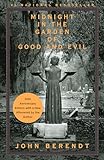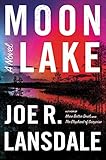When it comes to Southern gothic, it’s not the heat that gets you, it’s the humidity. It’s a genre designed to make you uncomfortable. The stories are sticky with dread and unease, and the ripe atmosphere threatens to swallow everything. Turn over a rock and you’ll find it teeming with family secrets: incest, murder, madness. Sometimes the supernatural intrudes—ghosts rise up, or the Devil himself sidles in—but the most horrific transgressions are almost always the human ones. Characters in these stories may try to ignore the past—especially America’s racist history—but it’s always encroaching, as relentless as the vines choking a decrepit plantation house.
Nathaniel Hawthorne and Edgar Allan Poe laid the foundations of Southern gothic, but the posts and beams were set by mid-century writers such as William Faulkner, Flannery O’Connor, and Carson McCullers. Every generation of writers, though, returns to the genre and reshapes it. Here are 10 of my favorites books that do something remarkable with Southern gothic, presented in the order they were published.
1. Child of God by Cormac McCarthy
 In 1973, McCarthy blew up the Southern gothic in the same way he’d later blow up the western in his 1985 masterpiece, Blood Meridian. Child of God is the story of Lester Ballard, a destitute, violent man living in Sevier County, Tenn., not far from where my parents grew up. With every page, Ballard moves further out of human society until he descends into murder and necrophilia. It’s not for the faint of heart, but McCarthy’s prose carries you through. He jumps from the poetic to the brusque and brutal, speaking in the voices of many locals who knew Ballard, a man they’ve either persecuted or recoiled from. McCarthy makes you suspect that Ballard isn’t an anomaly in his community, but the inevitable product of it.
In 1973, McCarthy blew up the Southern gothic in the same way he’d later blow up the western in his 1985 masterpiece, Blood Meridian. Child of God is the story of Lester Ballard, a destitute, violent man living in Sevier County, Tenn., not far from where my parents grew up. With every page, Ballard moves further out of human society until he descends into murder and necrophilia. It’s not for the faint of heart, but McCarthy’s prose carries you through. He jumps from the poetic to the brusque and brutal, speaking in the voices of many locals who knew Ballard, a man they’ve either persecuted or recoiled from. McCarthy makes you suspect that Ballard isn’t an anomaly in his community, but the inevitable product of it.
2. Beloved by Toni Morrison
 Morrison’s haunting and haunted novel won the Pulitzer Prize in 1988, and there’s no better book about trauma and the way it cannot be escaped or erased. Sethe, a former slave, made it to the free state of Ohio and has raised her children there. But when a young woman named Beloved shows up on Sethe’s doorstep, long-buried secrets come rushing out. By centering this Southern story on a Black woman, Morrison makes us reckon with the greatest sin in American history.
Morrison’s haunting and haunted novel won the Pulitzer Prize in 1988, and there’s no better book about trauma and the way it cannot be escaped or erased. Sethe, a former slave, made it to the free state of Ohio and has raised her children there. But when a young woman named Beloved shows up on Sethe’s doorstep, long-buried secrets come rushing out. By centering this Southern story on a Black woman, Morrison makes us reckon with the greatest sin in American history.
3. Midnight in the Garden of Good and Evil by John Berendt
 This 1997 book is nonfiction, but it reads like a novel, and depends on novelistic effects, such as shuffling the timing of events, to land its punches. The story is about Jim Williams, an antiques dealer in Savannah, Ga., who’s put on trial (multiple times) for the shooting of Danny Hansford, Williams’s employee and a male prostitute. The ostensible question of the book is whether it was murder or self-defense, but what I found so riveting was Berendt’s portrait of Savanah, with its white society ladies, Black debutantes, and drag queens (Lady Chablis is the most vibrant character in the book).
This 1997 book is nonfiction, but it reads like a novel, and depends on novelistic effects, such as shuffling the timing of events, to land its punches. The story is about Jim Williams, an antiques dealer in Savannah, Ga., who’s put on trial (multiple times) for the shooting of Danny Hansford, Williams’s employee and a male prostitute. The ostensible question of the book is whether it was murder or self-defense, but what I found so riveting was Berendt’s portrait of Savanah, with its white society ladies, Black debutantes, and drag queens (Lady Chablis is the most vibrant character in the book).
4. Sharp Objects by Gillian Flynn
 A literary confession: I saw Amy Adams in the television version of Sharp Objects before I went back and read Flynn’s 2006 novel. (Isn’t that what TV shows are supposed to do for books, after all?) But Flynn’s story is the star. The novel follows Camille Preaker, an emotionally and physically scarred journalist, who goes back to her home town of Wind Gap, Mo., to investigate a pair of murders. Flynn masterfully intertwines the hunt for the killer with the revelation of Camille’s tragic past. This is modern-day Southern gothic, and I ate it up with a spoon.
A literary confession: I saw Amy Adams in the television version of Sharp Objects before I went back and read Flynn’s 2006 novel. (Isn’t that what TV shows are supposed to do for books, after all?) But Flynn’s story is the star. The novel follows Camille Preaker, an emotionally and physically scarred journalist, who goes back to her home town of Wind Gap, Mo., to investigate a pair of murders. Flynn masterfully intertwines the hunt for the killer with the revelation of Camille’s tragic past. This is modern-day Southern gothic, and I ate it up with a spoon.
5. Swamplandia! by Karen Russell
 One of the hallmarks of Southern gothic is outlandish and outlandishly named characters, and Russell’s 2011 novel is chock-full of them: Chief Bigtree, an alligator wrestler with no Native American heritage who runs the struggling Everglades theme park of the title; the ghost Louis Thanksgiving and the (living) teenage girl named Osceola who’s in love with him; and a villain named Bird Man who may have supernatural powers. But much of the novel is told to us by 13-year-old Ava, the youngest child of the Chief, and it’s her precocious, hopeful, and pragmatic voice that anchors the book, and makes it so affecting.
One of the hallmarks of Southern gothic is outlandish and outlandishly named characters, and Russell’s 2011 novel is chock-full of them: Chief Bigtree, an alligator wrestler with no Native American heritage who runs the struggling Everglades theme park of the title; the ghost Louis Thanksgiving and the (living) teenage girl named Osceola who’s in love with him; and a villain named Bird Man who may have supernatural powers. But much of the novel is told to us by 13-year-old Ava, the youngest child of the Chief, and it’s her precocious, hopeful, and pragmatic voice that anchors the book, and makes it so affecting.
6. Lost Everything by Brian Francis Slattery
 I’m going to geographically and temporally stretch the territory of the Southern gothic so I can talk about one of my favorite books. In Slattery’s apocalyptic novel, which won the 2012 Philip K. Dick Award, the ironically named Sunny Jim travels up the Susquehanna River in Pennsylvania, through a fallen America ravaged by climate change, searching for his lost son. It’s the near future but feels like a doom-flooded version of a Mark Twain tale, replete with riverboat captains, preachers, and banjo players. Everyone knows the end is near; a slowly advancing storm wall they call “the Big One” has already swallowed most of the country, and it’s coming for the East Coast. Sunny Jim witnesses civilization breaking down in ugly ways, but there are moments of grace, and Slattery’s vivid prose never fails.
I’m going to geographically and temporally stretch the territory of the Southern gothic so I can talk about one of my favorite books. In Slattery’s apocalyptic novel, which won the 2012 Philip K. Dick Award, the ironically named Sunny Jim travels up the Susquehanna River in Pennsylvania, through a fallen America ravaged by climate change, searching for his lost son. It’s the near future but feels like a doom-flooded version of a Mark Twain tale, replete with riverboat captains, preachers, and banjo players. Everyone knows the end is near; a slowly advancing storm wall they call “the Big One” has already swallowed most of the country, and it’s coming for the East Coast. Sunny Jim witnesses civilization breaking down in ugly ways, but there are moments of grace, and Slattery’s vivid prose never fails.
7. Lovecraft Country by Matt Ruff
 Ruff’s 2016 novel blends pulp science fiction, Lovecraftian mythology, and Southern gothic sensibilities. The book opens with Atticus Turner, a Black Korean War veteran, trying to make his way through the Jim Crow South to get home to Chicago. The rest of the book, structured like an anthology, introduces us to Atticus’s parents, who publish a guide for Black travelers inspired by the Green Book, and the rest of his extended family. The Turners face off against the Braithwhites, a white family of sorcerers, but the real villain is Jim Crow. What terrors could scaly monsters hold compared to Southern cops and “sundown towns”?
Ruff’s 2016 novel blends pulp science fiction, Lovecraftian mythology, and Southern gothic sensibilities. The book opens with Atticus Turner, a Black Korean War veteran, trying to make his way through the Jim Crow South to get home to Chicago. The rest of the book, structured like an anthology, introduces us to Atticus’s parents, who publish a guide for Black travelers inspired by the Green Book, and the rest of his extended family. The Turners face off against the Braithwhites, a white family of sorcerers, but the real villain is Jim Crow. What terrors could scaly monsters hold compared to Southern cops and “sundown towns”?
8. A Lushing and Seething Hell by John Hornor Jacobs
 This 2019 book is a duology of novellas, and show Jacobs, author of the Southern Gods series, at the height of his powers. The first novella, The Sea Dreams It Is the Sky, is South American Lovecraft, as if Roberto Bolaño or Gabriel García Márquez had taken a turn toward cosmic horror. My Heart Struck Sorrow is more purely Southern gothic. The story follows Cromwell, a white music archivist traveling the 1930s South gathering field recordings for the Library of Congress, who keeps finding increasingly ominous versions of the murder ballad “Stagger Lee.” Cromwell is in over his head, and Jacobs infuses every cryptic incident with dread, leading to a final encounter in the woods with something inhuman. If you want to know the future of Southern gothic, pick up anything this man writes.
This 2019 book is a duology of novellas, and show Jacobs, author of the Southern Gods series, at the height of his powers. The first novella, The Sea Dreams It Is the Sky, is South American Lovecraft, as if Roberto Bolaño or Gabriel García Márquez had taken a turn toward cosmic horror. My Heart Struck Sorrow is more purely Southern gothic. The story follows Cromwell, a white music archivist traveling the 1930s South gathering field recordings for the Library of Congress, who keeps finding increasingly ominous versions of the murder ballad “Stagger Lee.” Cromwell is in over his head, and Jacobs infuses every cryptic incident with dread, leading to a final encounter in the woods with something inhuman. If you want to know the future of Southern gothic, pick up anything this man writes.
9. Mexican Gothic by Sylvia Moreno-Garcia
 Sylvia Moreno-Garcia, however, may have moved on from Southern gothic—her just-published new novel is Velvet Was the Night, which is 1970s Mexican noir—but if you haven’t read her bestseller from 2020, you should definitely remedy that. Mexican Gothic takes all the tropes of gothic fiction and places them in the Mexican countryside. There’s an old mansion, a depraved family, and a cornucopia of hidden secrets. What holds it together are the stylish heroine and Moreno-Garcia’s control of tone. She orchestrates a delicious slow build to a very creepy climax.
Sylvia Moreno-Garcia, however, may have moved on from Southern gothic—her just-published new novel is Velvet Was the Night, which is 1970s Mexican noir—but if you haven’t read her bestseller from 2020, you should definitely remedy that. Mexican Gothic takes all the tropes of gothic fiction and places them in the Mexican countryside. There’s an old mansion, a depraved family, and a cornucopia of hidden secrets. What holds it together are the stylish heroine and Moreno-Garcia’s control of tone. She orchestrates a delicious slow build to a very creepy climax.
10. Moon Lake by Joe R. Lansdale
 And now, something brand new from a master of Southern gothic. Lansdale has written upwards of 30 novels (I lost count on Wikipedia) and who knows how many novellas and short stories. I’ve loved his work ever since reading his short story “Night They Missed the Horror Show.” Moon Lake had me in the first two sentences: “My name is Daniel Russell. I dream of dark water.” In 1968, when Daniel was 13, his grief-stricken father tried to kill them both by driving off an East Texas bridge. The father died, but Daniel, who’s white, was taken in by a Black family. Years later, a local sheriff calls with new information and Daniel returns to the scene of the crime. Like any excellent Southern gothic, the secrets are juicy, the characters vivid, and the atmosphere is as thick as an East Texas night.
And now, something brand new from a master of Southern gothic. Lansdale has written upwards of 30 novels (I lost count on Wikipedia) and who knows how many novellas and short stories. I’ve loved his work ever since reading his short story “Night They Missed the Horror Show.” Moon Lake had me in the first two sentences: “My name is Daniel Russell. I dream of dark water.” In 1968, when Daniel was 13, his grief-stricken father tried to kill them both by driving off an East Texas bridge. The father died, but Daniel, who’s white, was taken in by a Black family. Years later, a local sheriff calls with new information and Daniel returns to the scene of the crime. Like any excellent Southern gothic, the secrets are juicy, the characters vivid, and the atmosphere is as thick as an East Texas night.
This piece was produced in partnership with Publishers Weekly.









